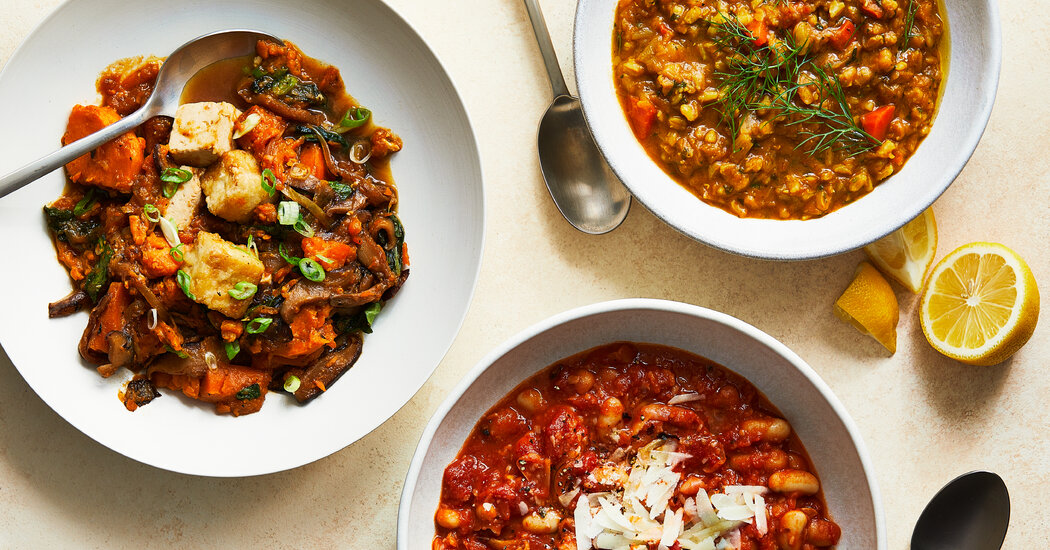
A slowly bubbling pot of stew on a cold winter evening, steam rising and scents wafting, is the epitome of cozy contentment.
There’s a fine line between a stew, a braise and a soup, and it’s quite subjective: Sometimes only a few spoons of broth make the difference. To my mind, a stew needs to be thick enough to eat with a fork but coated with plenty of velvety sauce so there’s a puddle left at the bottom of the bowl, easily mopped up with a piece of crusty bread (or soaked up by rice, noodles or mashed potatoes).
But what’s in the pot? A popular answer would be meat, beef, lamb or pork, simmering gently in an aromatic bath. But many other ingredients benefit from long, slow cooking, and a pot of chickpeas or beets will steam up your kitchen as pleasantly and fill your belly just as heartily as chicken or beef. Since I’ve been eating less meat over the last few years, I’ve often turned to vegetable-based stews to fortify myself and my family against the icy nights.
One benefit of vegetable-only stews is that they generally cook more quickly than meaty ones, which can take hours to soften the tough cuts traditionally called for. Otherwise, vegetable stews are cooked much like their meat-filled cousins. A base of chopped aromatic vegetables or alliums is sautéed, then liquid and more vegetables or beans or grains are added, and the mixture is simmered until tender. Starchy ingredients like potatoes or beans in the pot will help thicken the broth, turning it rich and silky. Broth or wine bump up the flavors.
Each of the three stews here has a distinct character that shows off the range of what’s possible.



